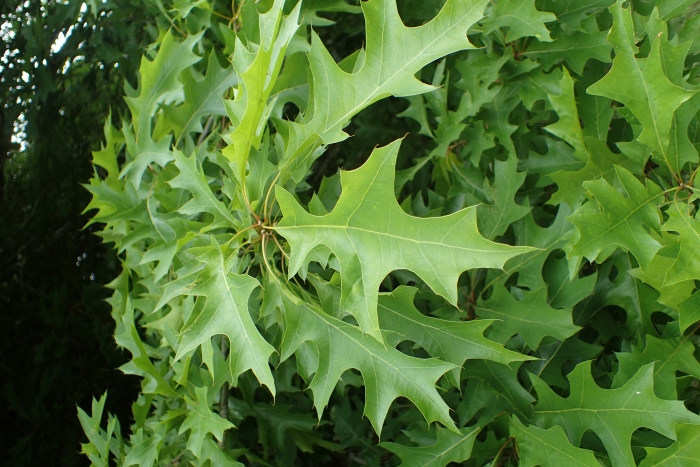Nuttall’s Oak
(Quercus texana)
Nuttall’s Oak (Quercus texana)
/
/

Krzysztof Ziarnek, Kenraiz
CC BY-SA 4.0
Image By:
Krzysztof Ziarnek, Kenraiz
Recorded By:
Copyright:
CC BY-SA 4.0
Copyright Notice:
Photo by: Krzysztof Ziarnek, Kenraiz | License Type: CC BY-SA 4.0 | License URL: https://creativecommons.org/licenses/by-sa/4.0 | Uploader: Kenraiz | Publisher: Wikimedia Commons | Title: Quercus_texana_kz04.jpg | Notes: my own photo |













Estimated Native Range
Summary
Quercus texana, commonly known as Nuttall’s oak, is a fast-growing, large deciduous tree native to bottomland forests, floodplains, and wetlands of the Southeastern United States. It can reach up to 25 meters (83 feet) in height and is characterized by a rounded to oval crown, dark brown ridged and furrowed bark, and glossy green leaves with sharply pointed lobes that turn a striking red in autumn. The tree produces acorns that are an important food source for wildlife.
Nuttall’s oak is valued for its adaptability to various soil conditions, including wet and poorly drained soils, making it an excellent choice for urban planting, large landscapes, and areas prone to flooding. It is also appreciated for its ease of transplanting and fast growth rate, which contribute to its increasing popularity in horticulture. The tree’s ability to recover gas exchange quickly after flooding is a notable adaptation. It requires full sun for optimal growth and benefits from medium water availability. While it is not commonly afflicted by serious disease or pest problems, oak wilt can be a concern, and it is advisable to monitor for signs of this disease.CC BY-SA 4.0
Nuttall’s oak is valued for its adaptability to various soil conditions, including wet and poorly drained soils, making it an excellent choice for urban planting, large landscapes, and areas prone to flooding. It is also appreciated for its ease of transplanting and fast growth rate, which contribute to its increasing popularity in horticulture. The tree’s ability to recover gas exchange quickly after flooding is a notable adaptation. It requires full sun for optimal growth and benefits from medium water availability. While it is not commonly afflicted by serious disease or pest problems, oak wilt can be a concern, and it is advisable to monitor for signs of this disease.CC BY-SA 4.0
Plant Description
- Plant Type: Tree
- Height: 50-80 feet
- Width: 40-65 feet
- Growth Rate: Moderate
- Flower Color: N/A
- Flowering Season: Spring
- Leaf Retention: Deciduous
Growth Requirements
- Sun: Full Sun
- Water: Medium
- Drainage: Medium, Slow
Common Uses
Bee Garden, Bird Garden, Butterfly Garden, Deer Resistant, Drought Tolerant, Fire Resistant, Rabbit Resistant, Street Planting, Water Garden
Natural Habitat
Bottomland forests, floodplains, and wetlands
Other Names
Common Names: Texas Red Oak, Nuttall Oak
Scientific Names: , Quercus texana, Quercus nuttallii, Quercus shumardii var. texana, Quercus nuttallii var. cachensis, Quercus shumardii subsp. texana, Quercus nuttallii var. texana, Quercus palustris f. nuttallii,
GBIF Accepted Name: Quercus texana Buckley